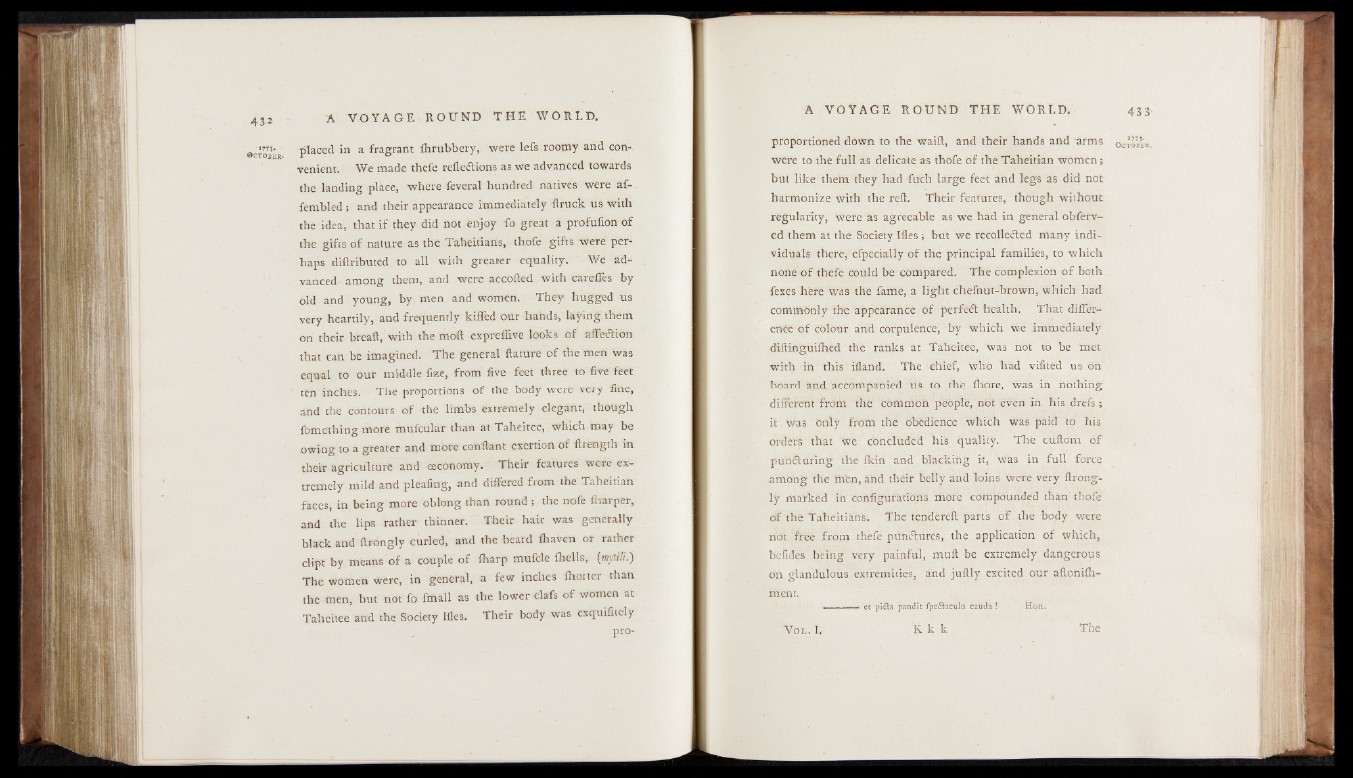
®cJo”e placed in a fragrant fhrubbery, were lefs roomy and convenient.
We made thefe reflections as we advanced towards
the landing place, where feveral hundred natives were af-
fembled ; and their appearance immediately flruck us with
the idea, that if they did not enjoy fo great a profufion of
the gifts of nature as the Taheitians, thofe gifts were perhaps
diftributed to all with greater equality. We advanced
among them, and were accofted with carefies by
old and young, by men and women. They hugged us
very heartily, and frequently killed our hands, laying them
on their bread, with the mod expreflive looks of affeCtion
that can be imagined. The general ftature of the men was
equal to our middle flee, from five feet three to five feet
' ten inches. The proportions of the body were very fine,
and the contours of the limbs extremely elegant, though
fomething more mufcular than at Taheitee, which may be
owing to a gteater and more conftant exertion of ftreaagth in
their agriculture and ceconomy. Their features were extremely’
mild and pleafing, and differed from the Taheitian
faces, in being more oblong than round ; t-he nofe (harper,
and the lips rather thinner. Their hair was generally
black and ftrongly curled, and the beard (haven or rather
clipt by means of a couple of (harp mufcle (hells, (myU'll.)
The women were, in general, a few inches fhorter than
the men, but not fo fmall as the lower clafs of women at
Taheitee and the Society Ifles. Their body was exquifitely
proproportioned
down to the waifl, and their hands and arms
were to the full as delicate as thofe of the Taheitian women ;
but like them they had fuch large feet and legs as did not
harmonize with the reft. Their features, though without
regularity, were as agreeable as we had in general obferv-
ed them at the Society Ifles ; but we recollected many individuals
there, efpecially of the principal families, to which
none of thefe could be compared. The complexion of both
fexes here Was the fame, a light chefnut-brown, which had
commonly the appearance of perfeCt health. That difference
of colour and corpulence, by which we immediately
diftinguifhed the ranks at Taheitee, was not to be met
with in this ifland. The. chief, who had vifited us On
board and accompanied us to the fhore, was in nothing
different from the common people, not even in his drefs ;
it was Only from the obédience which was paid to his
orders that we concluded his quality. The cuftom of
punCturing the (kin and blacking it, was in full force
among the men, and their belly and loins were very ftrongly
marked in configurations more compounded than thofe
of the Taheitians. The tendereft parts of the body were
not free from thefe pUnCtures, the application of which,
befides being very painful, muft be extremely dangerous
on glandulous extremities, and juftly excited our aftonifh-
inent.
. — ■ et pifla pandit fpe&acula cauda ! Hor.
V ol. I. K k k The
1773-
Oc t o b e r .